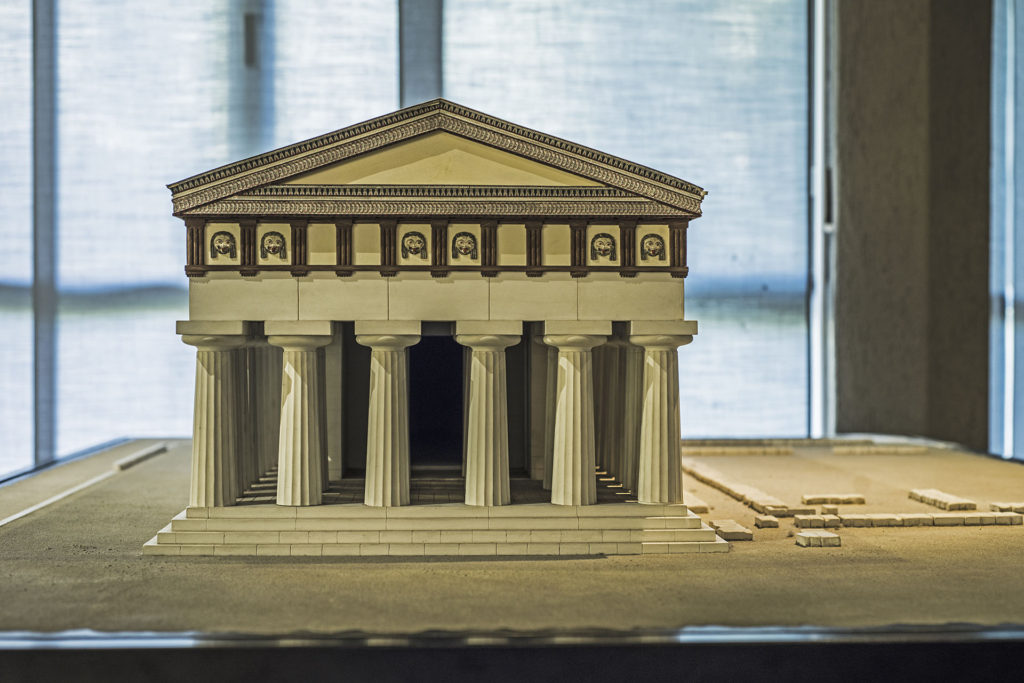“Giuggiulena” is a dialectal term used by Sicilians to refer to the white stone of Syracuse: a sedimentary rock typical of the quarries of the Hyblaean Mountains.
This type of stone was formed in the Miocene (a geological era that began around 20 million years ago).
Its colour is defined by several shades ranging from white to yellow. It can be beige, ochre or yellowish.
In ancient times, Greek temples did not only feature the pale marble and rough terracotta surface that we see today, a result of abrasion over the millennia.
 They were actually decorated with bright colours obtained using cinnabar, ochre or mercury sulphide, and many other pigments already known and used by the Greeks.
They were actually decorated with bright colours obtained using cinnabar, ochre or mercury sulphide, and many other pigments already known and used by the Greeks.
The decorations of the sacred buildings were lively and complex, featuring braided, petal and meander motifs.
A meander, for example, also known as a meandros, is a decorative border constructed from a continuous line folded to form a repeated motif.
The name meander recalls the winding Büyük Menderes River in Turkey.